|
Have a safe day!
Thursday, July 5
9 a.m.
All-hands meeting - Ramsey Auditorium
Speakers: Bruce Chrisman, Dan Green and Rob Roser
Non-technical briefing on Higgs results
3:30 p.m.
DIRECTOR'S COFFEE BREAK -
2nd Flr X-Over
THERE WILL BE NO THEORETICAL PHYSICS SEMINAR THIS WEEK
THERE WILL BE NO ACCELERATOR PHYSICS AND TECHNOLOGY SEMINAR TODAY
Friday, July 6
3:30 p.m.
DIRECTOR'S COFFEE BREAK - 2nd Flr X-Over
4 p.m.
Joint Experimental-Theoretical Physics Seminar - One West
Speaker: James Degenhardt, University of Pennsylvania
Title: New Results from ATLAS
Click here for NALCAL,
a weekly calendar with links to additional information.
Upcoming conferences |
|
Thursday, July 5
- Breakfast: Apple sticks
- Southwestern chicken tortilla
- Philly-style cheese steak
- *Garlic-herb roasted pork
- Smart cuisine: Mardi Gras jambalaya
- *Southwestern turkey wrap
- Assorted sliced pizza
- *Marinated grilled chicken Caesar salad
*Carb-restricted alternative
Wilson Hall Cafe Menu |
|
Friday, July 6
Dinner
Closed
Wednesday, July 11
Lunch
- Salmon w/ cucumber cream sauce
- Rice pilaf
- Lemon-coconut cake
Chez Leon Menu
Call x3524 to make your reservation.
|
|
Higgs all-hands meeting - today at 9 a.m. in Ramsey Auditorium
At 9 a.m. today in Ramsey Auditorium, Fermilab COO Bruce Chrisman will lead a 30-minute non-technical briefing on the Higgs boson. Fermilab scientists Rob Roser and Dan Green will explain in plain language why the Higgs has been in the news this week, the meaning of the LHC and Tevatron results, and why the Higgs is important.
Following the all-hands meeting, coffee and bagels will be provided in the Wilson Hall cafeteria. Fermilab scientists will be present to answer questions.
|
Higgs-like excitement on July 4
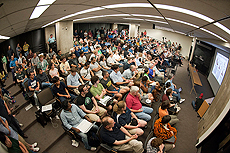 |
A standing room-only crowd gathered at 2 a.m. yesterday in One West to watch CERN's broadcast on their latest Higgs search results. Photo: Reidar Hahn |
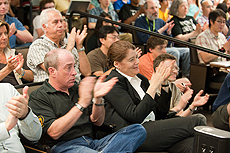 |
Sitting in the packed One West seminar room at 3 a.m. on Wednesday morning and watching a broadcast from the European laboratory CERN, Fermilab physicists Rob Roser (CDF) and Patty McBride (CMS) applaud as LHC scientists announce the discovery of a new particle that appears to be the Higgs boson. Photo: Reidar Hahn |
To view more photos of the July 4 gathering, click here.
|
Introducing Deb Sebastian, new internal communication specialist
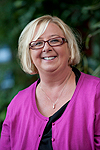 |
Deb Sebastian
Photo: Reidar Hahn
|
Deb Sebastian likes a good challenge. As Fermilab's new internal communication specialist, Sebastian has plenty to learn about particle accelerators and physics.
"I like things a little complex," she said. "I would get bored writing public relations or marketing or consumer pieces."
Sebastian's role is to facilitate and coordinate communication between departments and employees at the laboratory. She has previously worked in communications in the healthcare, engineering and nonprofit sectors. She knows the ins and outs of a large organization and comes to Fermilab with plenty of hands-on experience. However, it's Sebastian's dedication to the people in the organization that makes her truly stand out.
"Helping everybody understand where they fit in is really important," Sebastian said. "It helps people understand their coworkers and where their organization is going."
She said a big draw to Fermilab was the prospect of an energetic workplace where students provide a constant stream of fresh faces.
Sebastian said she will help people connect with the laboratory's mission and structure so they know where they fit into the bigger picture. She acknowledged that this is a challenge, since Fermilab is project-based with many different goals. However, for her, it's not an intimidating task.
"I've been doing this for a quarter of a century," Sebastian said. "I've become interested in making people's day-to-day lives more rewarding and fulfilling at work, doing whatever I can to connect them, make it easier. I'm here to serve the employees."
Sebastian invites anyone who would like to speak with her to do so. Sebastian can be reached at debseb@fnal.gov.
—Joseph Piergrossi
|
Higgs found
From ScienceNews, July 4, 2012
Finally, physics's zoo of subatomic particles is full. Scientists have almost certainly snared the Higgs boson, the last particle waiting to be roped into the fold.
Decades after it was proposed, the Higgs emerged in the shards of particle collisions at the world's most powerful accelerator, the Large Hadron Collider at the CERN laboratory near Geneva. Physicists announced the discovery on July 4 during a seminar at the lab.
"We have now found the last missing cornerstone of the standard model," said Rolf-Dieter Heuer, CERN's director-general. "It's the beginning of a long journey to investigate all the properties of this interesting particle."
The particle's mass is around 125 billion electron volts, or about 133 times the mass of a proton. CERN captured the Higgs in two huge experiments, each of which independently reached the gold-standard statistical level for confirming the particle's discovery.
Read more |
A new particle could be physics' holy grail
From The New York Times, July 4, 2012
ASPEN, Colo. — Physicists working at CERN's Large Hadron Collider said Wednesday that they had discovered a new subatomic particle that looks for all the world like the Higgs boson, a potential key to an understanding of why elementary particles have mass and indeed to the existence of diversity and life in the universe.
Like Omar Sharif materializing out of the shimmering desert as a man on a camel in "Lawrence of Arabia," the elusive boson has been coming slowly into view since last winter, as the first signals of its existence grew until they practically jumped off the chart.
"I think we have it," Rolf-Dieter Heuer, the director general of CERN, said in an interview from his office outside Geneva, calling the discovery "a historic milestone." His words signaled what is probably the beginning of the end for one of the longest, most expensive searches in the history of science. If scientists are lucky, the discovery could lead to a new understanding of how the universe began.
He and others said that it was too soon to know for sure, however, whether the new particle is the one predicted by the Standard Model, the theory that has ruled physics for the last half-century. The particle is predicted to imbue elementary particles with mass. It may be an impostor as yet unknown to physics, perhaps the first of many particles yet to be discovered.
Read more
|
Higgs boson finding excites Fermilab scientists
From Voice of America, July 4, 2012
BATAVIA, Illinois—Scientists at the European Center for Nuclear Research (CERN) announced Wednesday the discovery of a subatomic particle that fits the description of the Higgs boson, also known as the "God Particle." Scientists at the Fermi National Accelerator Laboratory say the development is historic.
Some 200 scientists and other staffers gathered at Fermilab -- at two o'clock in the morning - to watch the announcement from Geneva. Many of them have strong connections to the CERN experiment - using the atom-smashing Large Hadron Collider (LHC) to locate the Higgs boson, including the head of the CMS group, Patricia McBride.
"A lot of the techniques that are being used there were first tried out here. A lot of people did their training here," said McBride.
Scientists have spent hundreds of millions of dollars creating technologically advanced devices that can smash atoms together, and tens of thousands of hours of manpower pouring over the resulting data. But they now believe they have found what looks like the subatomic particle known as the Higgs boson.
Read more
|
|
A great discovery
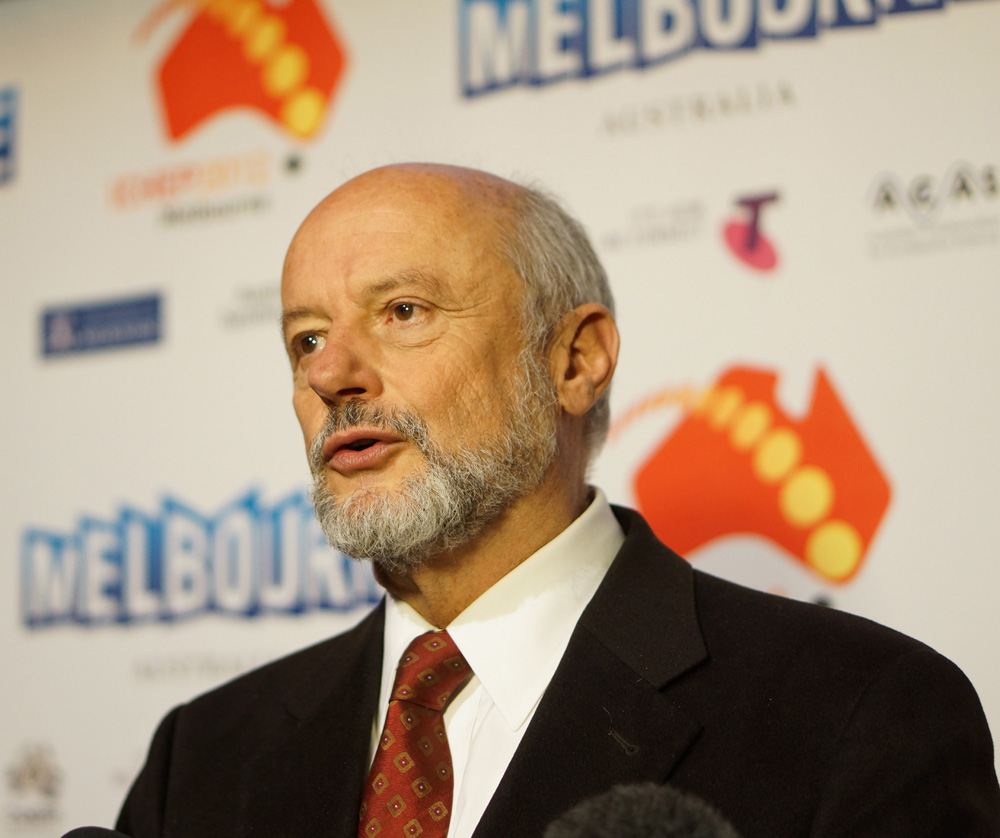 |
Director Pier Oddone at a press conference in Melbourne. |
The announcement on July 4th by CMS and ATLAS that they have discovered a new particle likely to be the long-sought Higgs boson has reverberated around the world. As well it should. It is of fundamental importance to our understanding of nature and it opens new paths towards a more complete understanding of the physical laws that rule our existence.
In this short column I want to congratulate CERN and the many collaborators around the world that have brought us this discovery. I want to congratulate and thank especially all the people at Fermilab who contributed to this discovery; the CMS collaboration members who have been involved in the analysis of the data; the scientists and staff members who support more than fifty US universities in their LHC participation; the many physicists, engineers and technicians who contributed to the building and operation of CMS; the computer specialists who have made the grid software successful; the folks who helped build the LHC's final-focus magnets, the most complex in the accelerator; the specialists who contributed to the repair of the LHC after its rocky start; the administrators who have supported the many folks working on LHC for more than a decade, going back and forth to CERN; and especially all the collaborators at the Tevatron who pioneered many of the accelerator and detector technologies, triggering systems and analysis techniques that have contributed mightily to the success of the LHC.
Thank you and congratulations.
|
The Tevatron and the Higgs boson
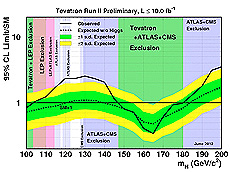 |
| If the entire Tevatron Run II program was repeated 100 times and the Higgs boson did not exist, then the observed limit (black solid line) would fall within the green band 68 times and within the green or the yellow band 95 times. The observed curve being well outside the bands between 115 and 135 GeV/c2 is thus an unlikely occurrence and an indication of a Higgs boson existence in that mass range.
|
The long hunt for the Higgs boson may have come to an end. The recent Tevatron results presented at the July 2 seminar at Fermilab and using the full Tevatron data set provided the strongest indication of the Higgs boson's existence at that time, and are consistent and complementary with the July 4 reports from the Large Hadron Collider experiments.
The Standard Model, the extraordinarily successful theory that describes how particles and forces interact, predicts the existence of a Higgs boson. This fundamental particle's unique characteristics render its discovery crucial for our understanding of nature, including why elementary particles have mass.
The Standard Model does not predict the mass of the Higgs boson, but it does dictate its behavior for a given mass. The Higgs boson favors decaying into a pair of b quarks below a mass of 135 GeV/c2 and into a pair of W bosons above that mass. CDF and DZero scientists exploited all decay modes in their searches to ensure that no Higgs boson event was missed in their analyses.
Since the end of the Tevatron run in September 2011, CDF and DZero scientists have been analyzing the full Tevatron data set, accumulated over past 10 years. They recently completed their analyses. Both collaborations developed substantially improved signal and background separation methods to optimize their search for the Higgs boson, with hundreds scientists from 26 countries actively engaged. After careful analysis and multiple verifications, CDF and DZero scientists found a substantial excess of events in the data beyond the background expectation in the mass region between 115 GeV/c2 and 135 GeV/c2, consistent with the predicted signal from a Higgs boson. From the study of the most probable decay channel of the Higgs boson to a pair of b quarks, currently only easily accessible at the Tevatron, the excess stands at the 2.9 sigma level, leaving only a 1 in 550 chance for the background to mimic a Higgs signal in this mass range.
Together the recent Tevatron and LHC results indicate that the particle seen at the Tevatron and LHC looks, smells and tastes like the long-hunted Higgs boson. It is a triumph of the theory that predicts the inner workings of nature and of the ingenious experiments that confirm theoretical predictions!
—The CDF and DZero collaborations
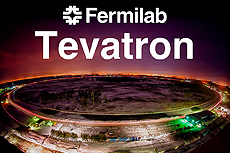 |
| The CDF and DZero collaborations thank all Fermilab teams for their contributions to the experiments' physics programs. We acknowledge the support of many national and international funding agencies, especially the U.S. DOE and the NSF.
|
|
ES&H weekly report, July 2
This week's safety report, compiled by the Fermilab ES&H section, contains five incidents.
A subcontractor working off-site slipped off a platform, injuring his hand and thumb and abrading his back and knee. This is a DART case but is not a recordable case since the contracting company has fewer than 10 employees.
An employee noted an insect bite on his/her arm.
An employee was stung by a bee while surveying a dumpster of scrap metal. The case is not recordable.
Another employee was stung twice by a wasp. He received first-aid treatment only.
An employee reported to the medical office for itching and rash, possibly arising from contact with poison ivy.
Find the full report here. |
|